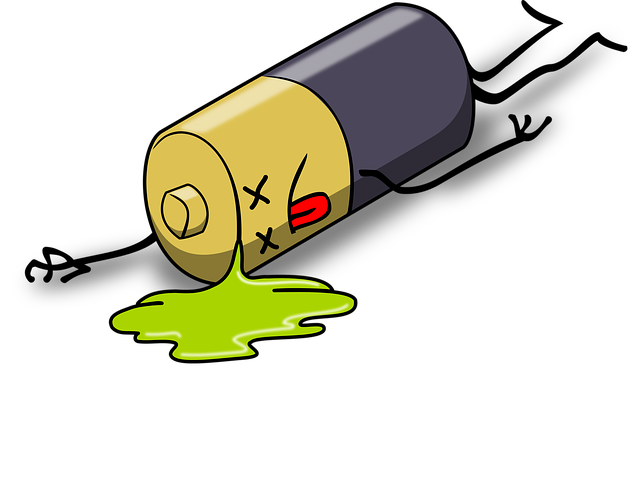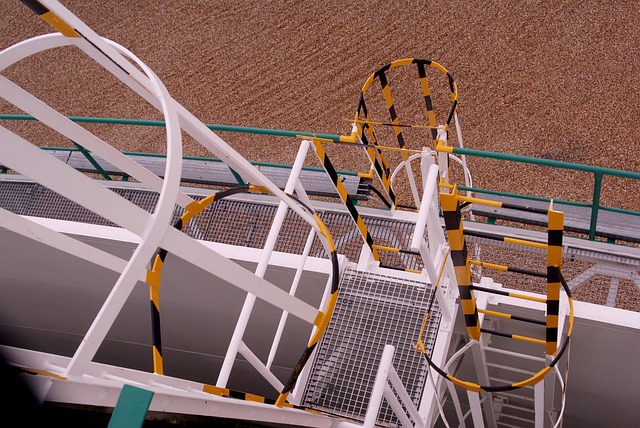Leak detection is a critical process for maintaining efficiency, preventing waste, and ensuring safety in various systems, including water pipelines, industrial processes, and software applications. Modern technologies like thermal imaging cameras, moisture meters, and acoustic sensors have revolutionized leak detection by offering faster, more precise solutions. Advanced sensors provide real-time monitoring, enabling proactive leak management and minimizing damage. Case studies show that fast leak detection enhances industrial efficiency and sustainability, with successful implementations in oil refineries and water treatment plants. Integrating leak detection systems with smart building management platforms further improves water conservation and damage prevention. Future solutions include IoT devices, smart sensors, machine learning, and drone technology for enhanced pipeline monitoring and safe inspections.
In today’s world, efficient leak detection systems are essential for managing water resources, minimizing damage, and reducing costs. This article explores the fast leak detection solutions that have revolutionized the plumbing industry. From understanding the basics of leak detection to comparing traditional methods with modern technologies, we delve into the unique challenges posed by various types of leaks. We also highlight the role of advanced sensors in real-time monitoring, present successful case studies, and discuss integrating leak detection with smart building management. Furthermore, we peek into future trends and innovations shaping the leak detection landscape.
Understanding Leak Detection: The Basics and Importance

Leak detection is a critical process that involves identifying and pinpointing sources of leaks in various systems, such as water pipelines, industrial processes, or even software applications. It is a fundamental practice to maintain efficiency, prevent waste, and ensure safety. The basic principle behind leak detection is to monitor and analyze data from sensors, pressure gauges, or other measurement tools to detect any unusual patterns or anomalies that indicate a potential leak.
The importance of prompt leak detection cannot be overstated. In the context of water distribution systems, for instance, early identification of leaks can help prevent substantial water wastage and reduce financial losses for utilities. Similarly, in industrial settings, detecting leaks in gas or chemical pipelines is crucial for preventing environmental hazards and ensuring operational continuity. Effective leak detection methods enable proactive maintenance, minimizing damage and downtime caused by undetected issues.
Traditional Methods vs Modern Leak Detection Technologies

In the realm of leak detection, traditional methods have long been the go-to approach, involving manual inspections and time-consuming processes. These conventional techniques often rely on visual cues and physical measurements, requiring professionals to meticulously search for signs of leaks, from visible water stains to pressure drops. While effective, this method is labor-intensive, time-consuming, and may not always detect subtle or hidden leaks.
Modern leak detection technologies have emerged as game-changers, offering faster, more efficient, and precise solutions. Advanced tools such as thermal imaging cameras, moisture meters, and acoustic sensors utilize cutting-edge technology to identify leaks with remarkable accuracy. These modern methods can detect even the smallest of leaks, providing real-time data and alerts, thus revolutionizing the way we address water loss issues. By employing these innovative technologies, professionals can now navigate complex systems more effectively, ensuring prompt repair and reduced damage.
Common Types of Leaks and Their Unique Detection Challenges

Leak detection is a critical process, and various types of leaks present distinct challenges for specialists in this field. One common category includes water leaks, which are often detected through pressure changes or visual inspections of pipes and fixtures. However, identifying subtle water seeps in hidden areas, such as behind walls or under floors, can be difficult due to the lack of immediate visible damage.
Another significant type is gas leak detection, requiring specialized equipment like infrared cameras and sniffer dogs to pinpoint sources, especially in confined spaces. Gas leaks pose unique risks, demanding swift action to prevent safety hazards. Additionally, industrial facilities deal with hazardous liquid leaks, where advanced sensors and monitoring systems are employed to track and contain potential environmental disasters, emphasizing the diverse nature of leak detection challenges and solutions.
Advanced Sensors and Their Role in Real-Time Monitoring

Advanced sensors play a pivotal role in modern leak detection systems, offering real-time monitoring capabilities that were previously unimaginable. These cutting-edge devices are designed to detect even the smallest changes in pressure, temperature, or other physical parameters, enabling immediate identification of potential leaks. By deploying these sensors strategically throughout pipelines, tanks, and other critical infrastructure, companies can swiftly pinpoint issues before they escalate into major problems.
The integration of advanced sensors facilitates continuous surveillance, allowing for proactive rather than reactive leak management. This real-time data provides valuable insights into system performance, helps predict maintenance needs, and optimizes overall operational efficiency. With their high accuracy and sensitivity, these sensors contribute significantly to enhancing safety measures and minimizing environmental impact by ensuring swift action in case of any suspected or actual leaks.
Case Studies: Successful Implementation of Fast Leak Detection Systems

In recent years, numerous case studies have demonstrated the remarkable effectiveness of fast leak detection systems in various industrial sectors. These advanced technologies have proven invaluable for preventing costly downtime and minimizing environmental impact caused by leaks. For instance, a leading oil refinery adopted a real-time leak monitoring solution, integrating smart sensors with AI-driven analytics. The system not only identified subtle pressure variations indicative of early-stage leaks but also mapped their location precisely, enabling rapid repair and preventing significant ecological damage.
Similarly, a water treatment plant successfully implemented a network of wireless sensors to detect and locate leaks in their distribution network. This proactive approach resulted in a substantial reduction in water losses, improving overall efficiency and sustainability. These success stories underscore the transformative potential of fast leak detection systems, offering businesses not just a solution for immediate issues but also a strategic advantage in long-term operational excellence.
Integrating Leak Detection with Smart Building Management

Integrating leak detection systems with smart building management platforms offers a comprehensive approach to water conservation and damage prevention. By seamlessly connecting advanced sensors and analytics, buildings can proactively identify and address leaks in real-time. This integration allows for immediate responses, minimizing water waste and reducing maintenance costs.
Smart building management systems can analyze patterns, detect anomalies, and provide insights into water usage across various occupancies. When a leak is detected, these platforms facilitate automated alerts to building managers, enabling swift action. This technology not only enhances the efficiency of facilities but also contributes to sustainable practices by optimizing water utilization in commercial and residential settings alike.
Future Trends and Innovations in Leak Detection Solutions

As technology continues to advance, future trends in leak detection solutions promise to be more efficient and precise. One prominent innovation is the integration of Internet of Things (IoT) devices and sensors that can monitor pipelines and storage facilities in real-time. These smart sensors use advanced analytics and machine learning algorithms to detect anomalies and predict potential leaks before they occur. This proactive approach not only saves time but also minimizes damage by enabling prompt repairs.
Another emerging trend is the use of drone technology for leak detection, particularly in hard-to-reach areas or large infrastructure networks. Drones equipped with high-resolution cameras and thermal imaging can swiftly scan pipelines, tanks, and other structures from above, identifying leaks that might be invisible to traditional methods. This technology enhances safety by reducing the need for manual inspections in hazardous environments and boosts efficiency through faster data collection and analysis.
